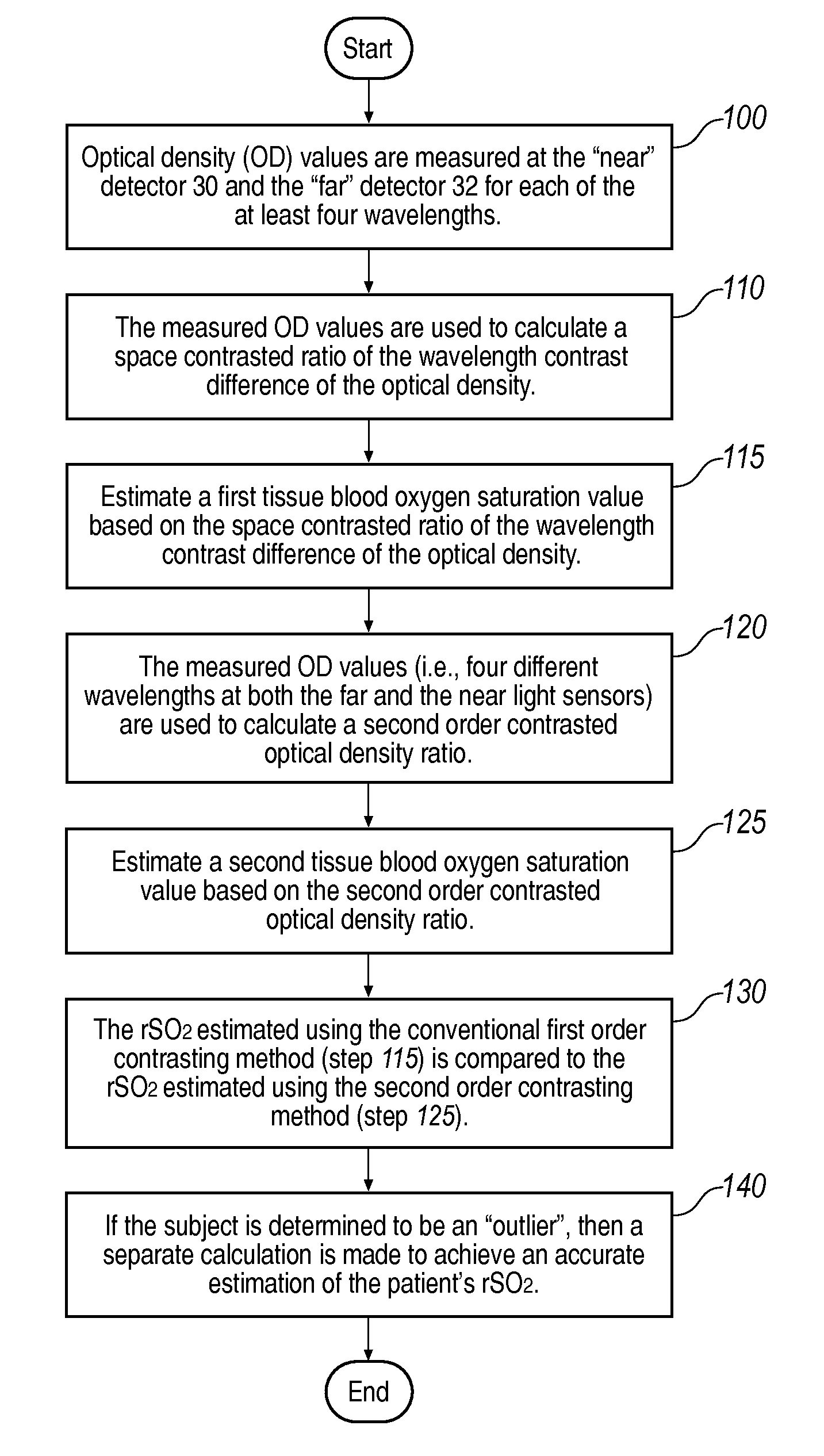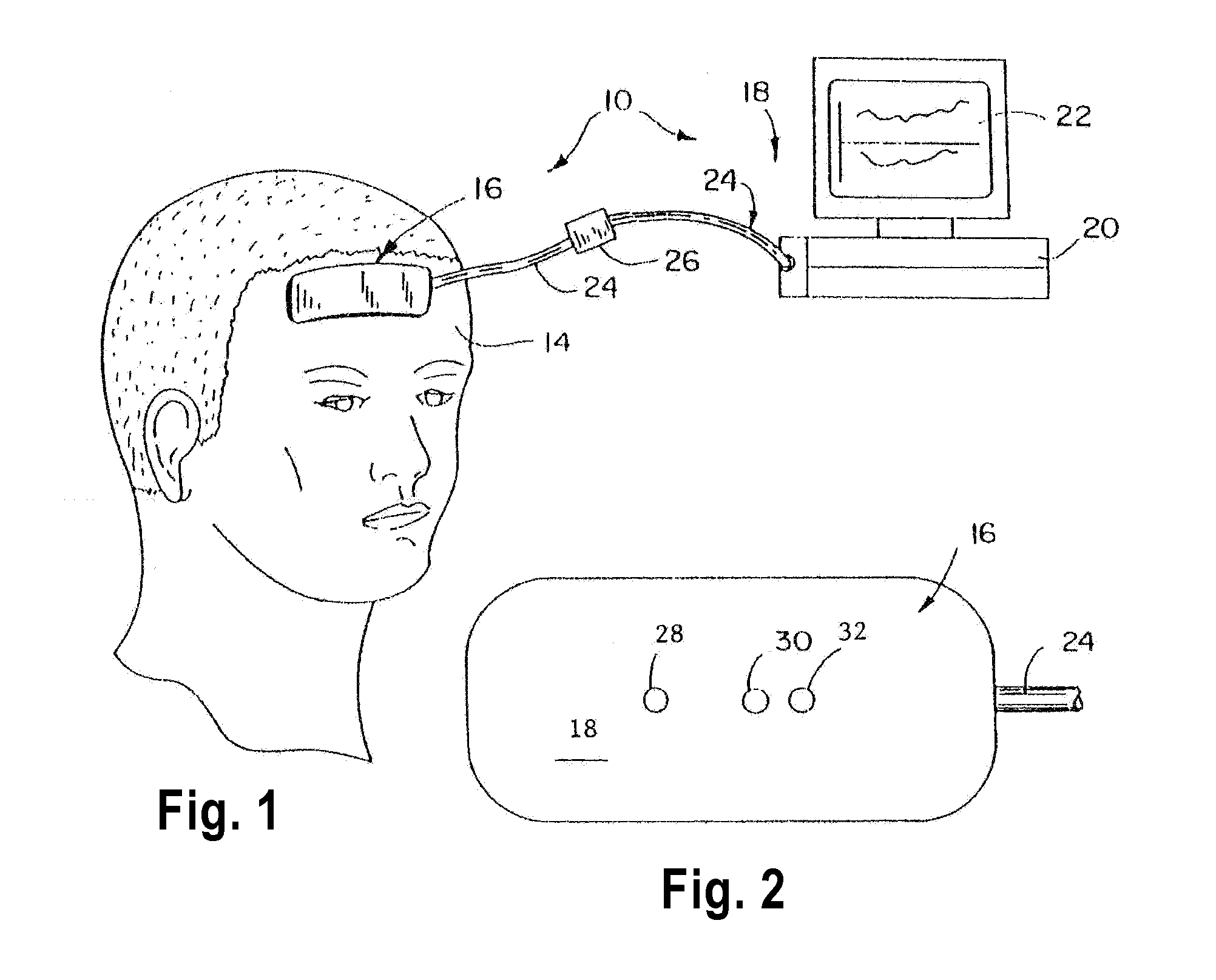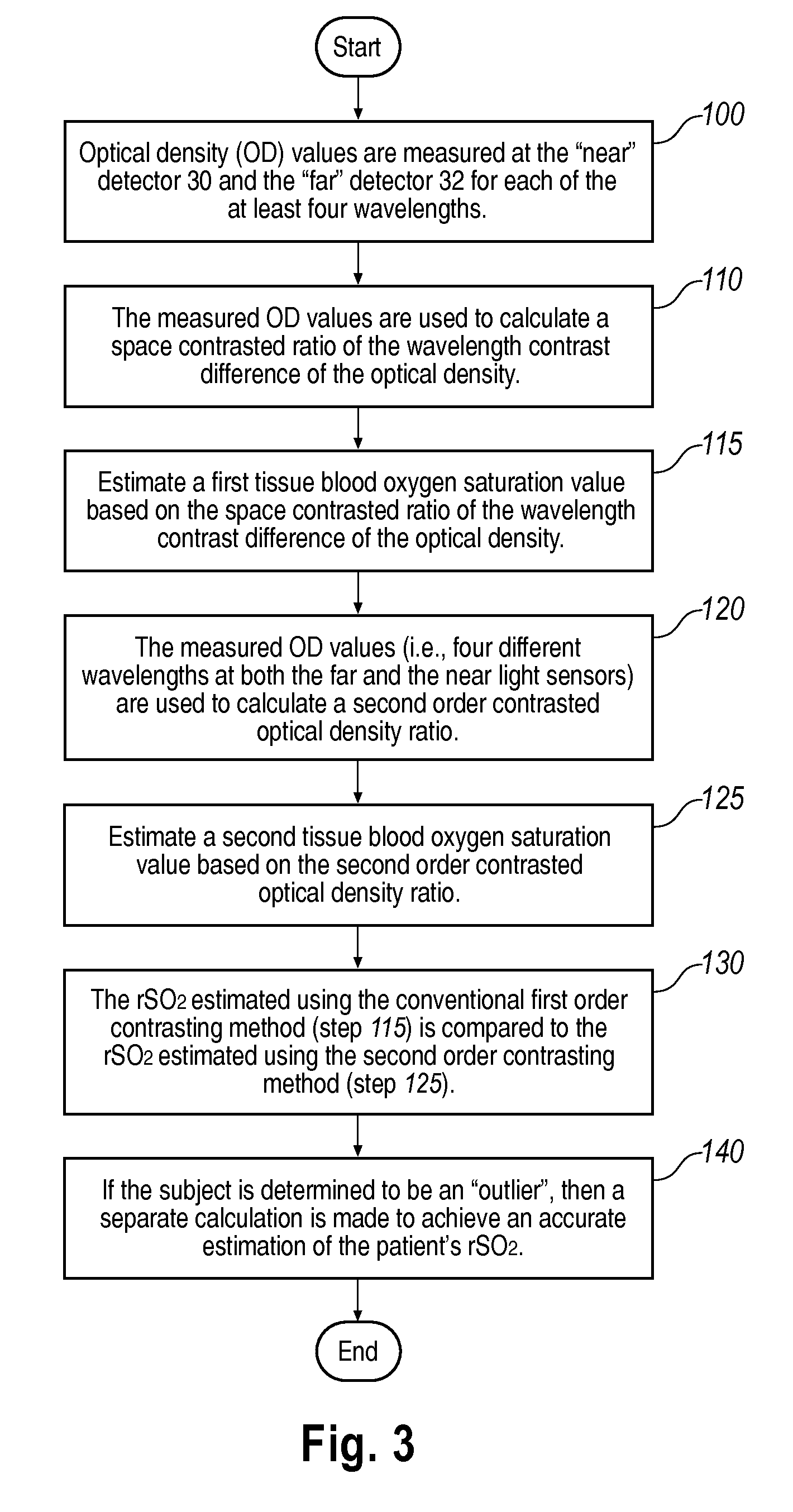System and method of resolving outliers in NIRS cerebral oximetry
a technology of cerebral oximetry and system and method, which is applied in the field of system and method of resolving outliers in nirs cerebral oximetry, can solve the problems of adversely affecting the accuracy of the above-described approach for estimating rso, and accumulation of excessive connective tissu
- Summary
- Abstract
- Description
- Claims
- Application Information
AI Technical Summary
Benefits of technology
Problems solved by technology
Method used
Image
Examples
Embodiment Construction
[0016]FIG. 1 illustrates an exemplary environment for implementation of a system 10 to perform spectrophotometric cerebral oximetry. The system 10 has a spectrophotometric apparatus 18 connected to a sensor 16 through an electrical cable 24. The electrical cable 24 may include a signal amplifier 26. The spectrophotometric apparatus 18 is a computer or other processor-based computing device 20 and a monitor or other visual display device 22. The computing device 20 includes customary memory devices that store data and algorithm instructions and a processor that executes algorithm instructions.
[0017]FIG. 1 illustrates one exemplary environment for system 10, wherein the sensor 16 is affixed to the forehead 14 of a human subject. The sensor 16 is configured to emit light into the subject's body, receive / detect the light reflected from the subject's body and convert the received light to electrical signals representative of the optical density (“OD”) of the received light. The spectroph...
PUM
 Login to View More
Login to View More Abstract
Description
Claims
Application Information
 Login to View More
Login to View More - R&D
- Intellectual Property
- Life Sciences
- Materials
- Tech Scout
- Unparalleled Data Quality
- Higher Quality Content
- 60% Fewer Hallucinations
Browse by: Latest US Patents, China's latest patents, Technical Efficacy Thesaurus, Application Domain, Technology Topic, Popular Technical Reports.
© 2025 PatSnap. All rights reserved.Legal|Privacy policy|Modern Slavery Act Transparency Statement|Sitemap|About US| Contact US: help@patsnap.com



